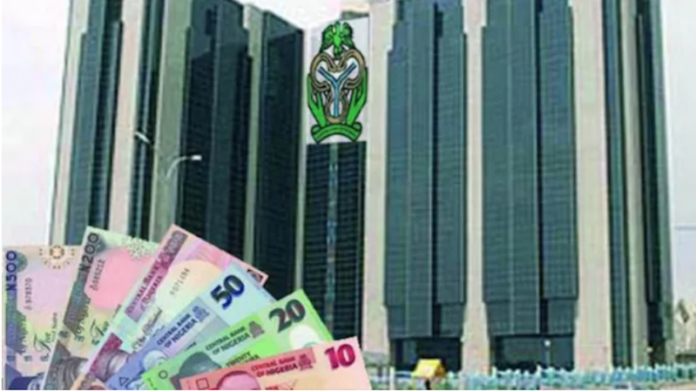Debt servicing has continued to constitute a major threat to Nigeria’s economy as the Central Bank of Nigeria (CBN) disclosed that it has spent $2.56 billion to service the federal government’s foreign debt obligations in nine months of 2023.
This represents 18 per cent Year-on-Year (YoY) increase from $2.17 billion in nine months of 2022.
The international payment data released by the CBN showed that from 2011 to 2021, the amount paid to the World Bank, International Monetary Fund (IMF), Exim Bank of China, among others for debt service and payments have continued to mount amid weakening of the naira against the dollar.
As gathered by THISDAY, the debt repayment was made only on behalf of the federal government and does not include states government debt services in the period under review.
The breakdown of debt service showed that the average minimum and maximum amount paid on debt services stood at $92.85million and $641.7million between June and July 2023, respectively.
The Debt Management Office (DMO) had disclosed that Nigeria’s total external debts stood at $43.16billion or N33.2115trillion as of June 2023.
THISDAY gathered that in nine months of 2021, debt service stood at $2.13billion and $5.48billion in nine months of 2020.
The CBN data revealed that between 2011 and 2017, the apex bank was withdrawing an average of $328 million on debt services and payment and it reached $1.4billion mark in 2018.
In 2019, the CBN withdraw $1.34 billion as debt service and payment, the international payment data disclosed.
The latest data by the apex bank revealed that in 2021, debt services and payment dropped by 63per cent to $2.13billion from $5.77billion reported in 2020.
As gathered by THISDAY, the reported $5.77billion is the highest debt services and payments recorded by the CBN, while a total of $242.8million was the lowest in 2013.
Analysis of international payment data showed that in the first three months of 2021, $1.3 billion was spent to service debts. The amount dropped to $298.9 million in the next three months ending June 2021.
From July to October, CBN further disclosed that a total of $606 million was spent on service debts.
A month-on-month breakdown showed that the CBN in January spent $617.5 million to service debts; it dropped by 65.45 per cent to $213.3 million in February; and dropped to $172.5 million in March.
In April, the CBN disclosed that a $82.3 million was spent on debt service; it moved to $167.5 million in May, the second-highest amount spent on debt service by the apex bank in one month.
In June, the amount dropped to $49.4 million; in July, it rose to $120.8 million. For August and September and October the figures reported by the CBN were $230.6 million, $169.2 million, and $85.2 million respectively.
However, between November and December of 2021, the CBN revealed that $148.57 and $69.83million was spent in debt services and payment respectively.
The apex bank in its economic report for the month of October 2021, maintained that debt service obligations amounted to N1,022.99 billion, compared with N440.63 billion in the second quarter of 2021.
“The increase was due largely to the rise in the payment of FGN Bonds and principal repayment of promissory note,” the CBN explained.
The apex bank noted that the depreciation of the naira exchange rate also contributed to the rising debt service payments.
Nigeria’s debt profile continued to snowball and its attendant cost is worrisome as members of the CBN’s Monetary Policy Committee (MPC) noted the rising burden of debt services.
Meanwhile, analysts have continued to express that the global outlook remained uncertain due to rising global debt levels, lockdown measures, and sluggish global trade, stressing that the roll-out of the COVID-19 vaccines and continued implementation of monetary, fiscal, and structural policies tends to strengthen global growth prospect.
In 2022, Nigeria spent a total of $2.4billion to service its external debt, which was a slight increase from the $2.11billion spent in 2021.
Under former President Muhmmadu Buhari, the apex bank data revealed that $15.1billion was spent on debt services between May 2015 and April 2023.
The International Monetary Fund (IMF) recently said the federal government projected to spend 82 per cent of its revenue on interest payments in 2023.
KPMG had also raised alarm that Nigeria’s debt service to revenue ratio may exceed 100 per cent in 2023.
The professional services firm in its macroeconomic snapshot Nigeria’s risk of sliding into critical debt servicing problems unless urgent actions were explored to significantly raise revenue.
The firm said with the N8.8 trillion expected new borrowings from both domestic and external means in the 2023 states and federal budgets, the total debt stock will likely stand at about N77.8 trillion by the end of 2023.
In 2022, Nigeria’s debt service-to-revenue ratio was 80.6 per cent — a figure far above World Bank’s suggested 22.5 per cent for low-income countries like Nigeria.
“With FGN revenue to GDP ratio of 4.49 per cent as of December 2022, Nigeria’s debt service to revenue ratio may surpass 100 per cent in 2023, which will limit the fiscal space and the government’s ability to pay for its operations and functions, unless urgent measures are taken to build revenue,” KPMG said.
The AfDB had said debt servicing gulps more than 50 per cent of Nigeria’s revenue.
The bank, which said this in its recent West Africa Economic Outlook, said the servicing of the country’s external debt gulped about 50 per cent of the country’s revenue.
According to AfDB, the average revenue spent by West African countries on external debt servicing is 17 per cent.
“This is high and even higher in Nigeria which spends about 50 per cent revenue on external debt servicing, “it said. It added that with the increasing domestic debt burden, the percentage of revenues spent on debt servicing in Nigeria was even higher.
The bank said that even though the country’s debt burden had increased by as much as 128 per cent in the last eight years, Nigeria’s debt to Gross Domestic Product remained low.
The low debt-to-GDP ratio notwithstanding, it added, the problem with the nation’s increasing debt burden was the high proportion of revenue spent on debt servicing.





















